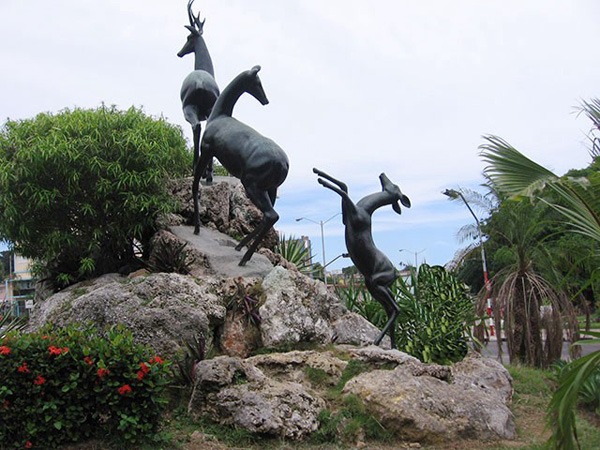The bronze sculpture group, popularly known as “the little deer from the zoo”, evidences a persistent inquiry into spirituality and, in particular, the ornamental. / web-pioneer magazine
Popular, admired, the sculptor cultivated a unique poetics and her work has long been organically integrated into our daily life.
More than a hundred public spaces and institutions of various kinds exhibit, in some of their areas, the harmony of forms, lines, volumes of the figurative and/or abstract pieces by Rita Longa Aróstegui (June 14, 1912 – May 29 2000), who always found a spiritual incentive to conceive symbolic representations of special Cubanness, from stone, metal, wood, plaster and, although scarcely, glass.
It is strange that someone passes impassive before the deer of the Family group (1947), at the entrance of the National Zoo; Or don’t be moved by the energy it radiates Virgin of the road (1948), in a busy roundabout in the Havana municipality of San Miguel del Padrón. Nor will it be easy to erase from memory the features and movement of the graceful ballerina (1950), from the Tropicana cabaret, or the ethereal muses (1950) that inhabit the premises of the Payret cinema-theater.
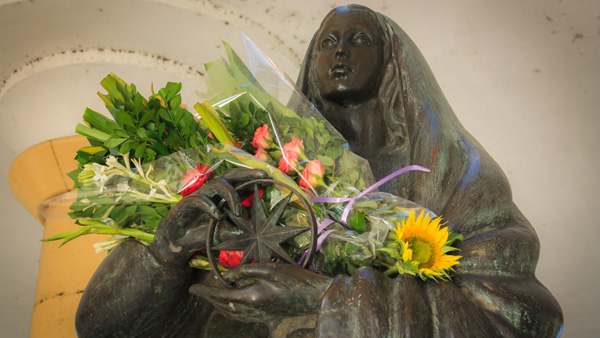
Just where the Central Highway, the Luyanó and San Miguel del Padrón roads intersect, La Virgen del Camino (1948), with the compass rose in her hands, blesses passers-by. / onlinetours.es
But, these creations, from which spirituality and delicacy emanate, are not the only ones retained and immortalized in the collective imagination; we also remember death of the swan (1959) and Form, space and light (1953), located in the National Theater of Cuba and the National Museum of Fine Arts, respectively.
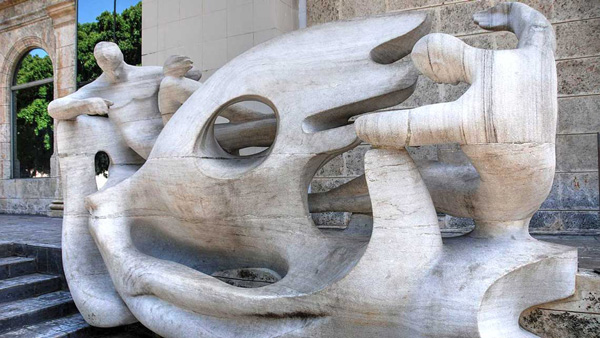
The piece Forma, espacio y luz (1950-1953), located in the Cuban Art building of the National Museum of Fine Arts, marks a decisive moment in the creative maturity of the sculptor. / onlinetours.es
At the same time, it would be inexcusable to ignore the extraordinary work of the taino village (1961-1964), a sculptural group that stands in the Guamá tourist center, in the Ciénaga de Zapata, in the province of Matanzas; perhaps artistic and conceptual concretion of who, from the first teaching exercises, assumed the aboriginal theme in his style and aesthetics, as he demonstrated with Hatuey at the stakeone of his original works.
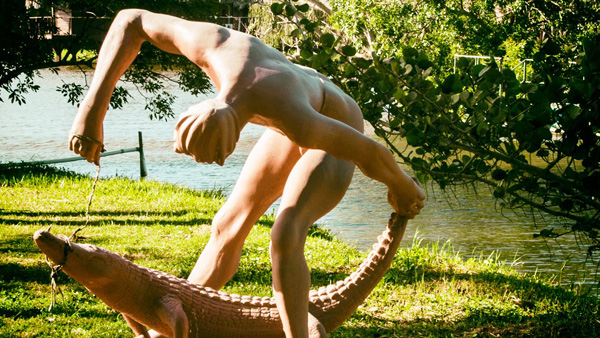
The Aldea Taíno ensemble is an example of how deeply indigenous legends and themes captivated the artist. / onlinetours.es
Genesis of a virtuous
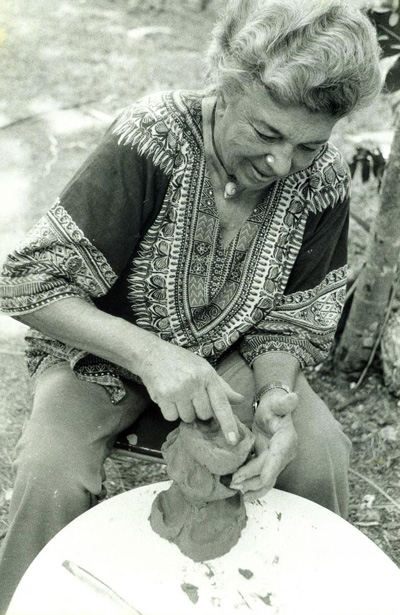
Enthusiastic and unrepentant in dissimilar projects, Rita Longa remained active until shortly before her death. / unknown author
Of aristocratic origin, as a child Rita Longa revealed abilities to assimilate the knowledge linked to the arts and letters; therefore, when she finished high school, her mother decided to enroll her in the San Alejandro Academy of Plastic Arts so that she could study commercial drawing, a very well-paid discipline at the time.
His passage through that academic center was erratic and fleeting; however, he contributed to the fact that sculpture seduced her forever and she took with her the knowledge transmitted by her teacher Juan José Sicre, whom he always praised as a great artist, beyond the teaching environment.
Despite efforts to develop his drawing skills, he never succeeded; so that when making the sketches of his projects, he solved this limitation by making a replica of the piece on a very small scale, exactly one tenth of its original size and, after confirming its functionality, he considered it ready to be submitted to the architect and The buyer. So he confirmed it BOHEMIA from the 50s, where the reader could see a miniature of the now famous Tropicana dancer.
In the early 1930s he began to get involved and participate in personal and group exhibitions; At that time, the girl already had tools derived from the academy and some self-taught knowledge that gave her creations a certain avant-garde and innovative air.
“My first works consisted of games of lines and shapes, searches for daring solutions, new expressions, trial and error that gradually acquired greater security”, she would confess about the experimental instinct that always mobilized her.
He made friends and professional ties with notable artists of the time. He joined the Free Study of Painting and Sculpture, organized by the painter and caricaturist Eduardo Abela Villarreal, who managed to bring together –as advisers– outstanding figures including Rita Longa herself, René Portocarrero, Mariano Rodríguez, Jorge Arche and Alfredo Lozano.
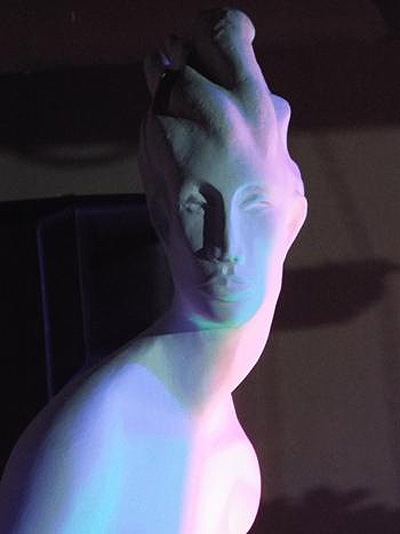
Aboriginal traditions permeated the creator’s inspiration, as occurred in this piece entitled La india Caonaba. / newspaper26.cu
According to the criteria of experts, that experimental essay generated a revolution in Cuban art, by attracting people of all ages, informed or neophyte, to the same vital space, not at all orthodox, where the visual arts were the reason and essence for communion. This pedagogical experience would be reissued by the artist several years later at the Guamá Workshop, with Celia Sánchez Manduley as her main mentor.
Poetics of a pertinacious woman
After the triumph of January 1959, she joined the Cuban social project, with a relevant sculptural work, and persisted in the intention of being a guide and inspiring of the new batches of creators adept at sculpture, a modality of plastic arts for years relegated and dismissed in the country.
From creative work, he defended various social, political and cultural causes, such as those of the Vietnamese and Cambodian peoples. She became the architect and promoter of the transcendent artistic movement generated in the eastern province of Las Tunas, declared by her Capital of Sculpture.
Likewise, together with several colleagues, he founded the Commission for the Development of Monumental and Environmental Sculpture (Codema), which he chaired from 1980 until shortly before his death.
She shared a passion for art and political positions with her husband and father of her children, the jurist Fernando Álvarez Tabío (1907-1979), permanent ambassador to the UN for several years, university professor and president of the Institute of International Relations.
Awarded the National Prize for Plastic Arts in 1995, Rita Longa becomes a paradigm of inquiry into the perpetuity and renewal of the beautiful, without letting go of the genuinely decorative. In each one of her sculptures, multiple readings and gropings can be seen due to the artist’s ability and insight to merge diverse ideas into a single, essential concept.
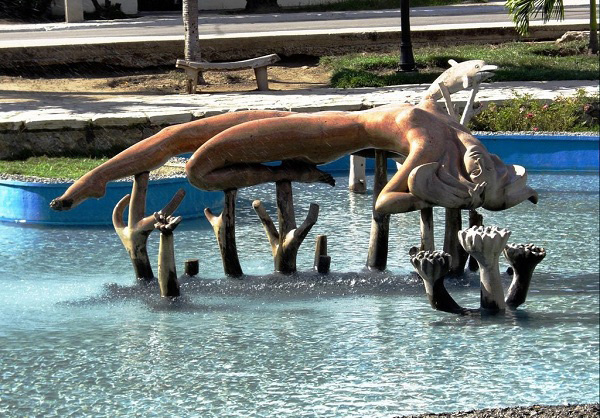
True tributes to our insularity are the water flows that accompany many of Rita Longa’s works; a sample is The source of the Antilles (1977), in Las Tunas. / lajiribilla.cu
Historical deeds, patriotic figures, religious characters or symbols of identity, among others, assumed from a specific theme, take shape in his work from a global vision of our nationality.
The sensuality of the female body, naked or dressed, and the insistence on the flow of water are almost indelible attributes of the ensembles that bear the signature of this obstinate and diligent Cuban woman who created fountains of the Virtues (1952), in Las Villas, and of the martyrs (1947), in Havana’s Paseo del Prado; also the Source of the Antilles (1977) and the sculpture group of the forest of heroes (1973), the latter located in Las Tunas and Santiago de Cuba, respectively.
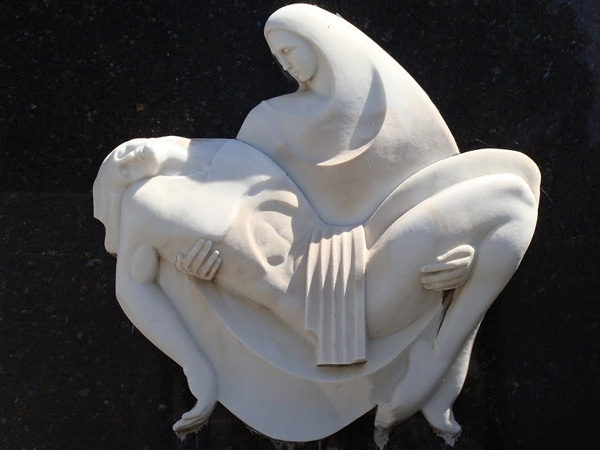
The mercy is found in the Cristóbal Colón Cemetery, in Havana. / radiorebelde.cu
One of her most meticulous critics and scholars, Alejandro G. Alonso, said: “There must be a lot of genuineness in Rita Longa’s work when an entire country has been able to foster her so enthusiastically”; and certainly she is not without reason, her valuable legacy overflows sensitivity towards being Cuban.

